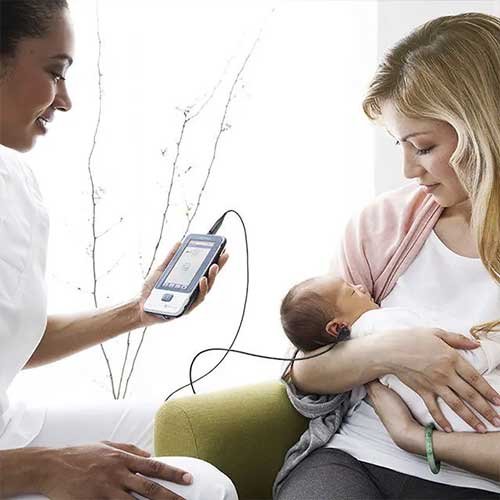B.E.R.A ASSR OAE
At the Sutej Speech Therapy and Hearing Aid Clinic, the implementation of advanced diagnostic tools is paramount in ensuring accurate assessments and effective treatment plans for patients with auditory processing issues. Among these tools, the Brainstem Evoked Response Audiometry (BERA), Auditory Steady-State Response (ASSR), and Otoacoustic Emissions (OAE) stand out as invaluable instruments in the diagnosis and management of hearing impairments.
The BERA test, also known as Auditory Brainstem Response (ABR), is a non-invasive neurodiagnostic test that evaluates the integrity of the auditory pathway from the cochlea to the brainstem. By measuring the electrical activity generated by the auditory nerve and brainstem in response to sound stimuli, BERA provides crucial insights into the functionality of these vital auditory structures.

In tandem with BERA, the ASSR test further enhances the clinic’s diagnostic capabilities. ASSR utilizes frequency-specific stimuli to evoke neural responses, allowing for the assessment of hearing sensitivity across a range of frequencies. This technique is especially beneficial in cases where conventional audiometry may yield inconclusive results, such as in patients with profound hearing loss or cognitive impairments.
Complementing these electrophysiological assessments, Otoacoustic Emissions (OAE) testing provides valuable information about the health of the cochlea, the inner ear’s sensory organ responsible for transducing sound vibrations into neural signals. OAEs are faint sounds generated by the outer hair cells of the cochlea in response to auditory stimuli. By measuring and analyzing these emissions, clinicians can infer the integrity of cochlear function, aiding in the detection of cochlear pathology and monitoring the effects of intervention strategies.
At the Sutej Speech Therapy and Hearing Aid Clinic, the integration of BERA, ASSR, and OAE testing into the diagnostic process exemplifies a commitment to delivering comprehensive and individualized care to patients with auditory disorders. By leveraging these advanced techniques, clinicians can accurately diagnose hearing impairments, tailor treatment plans to each patient’s unique needs, and ultimately improve their quality of life through optimized auditory function.
